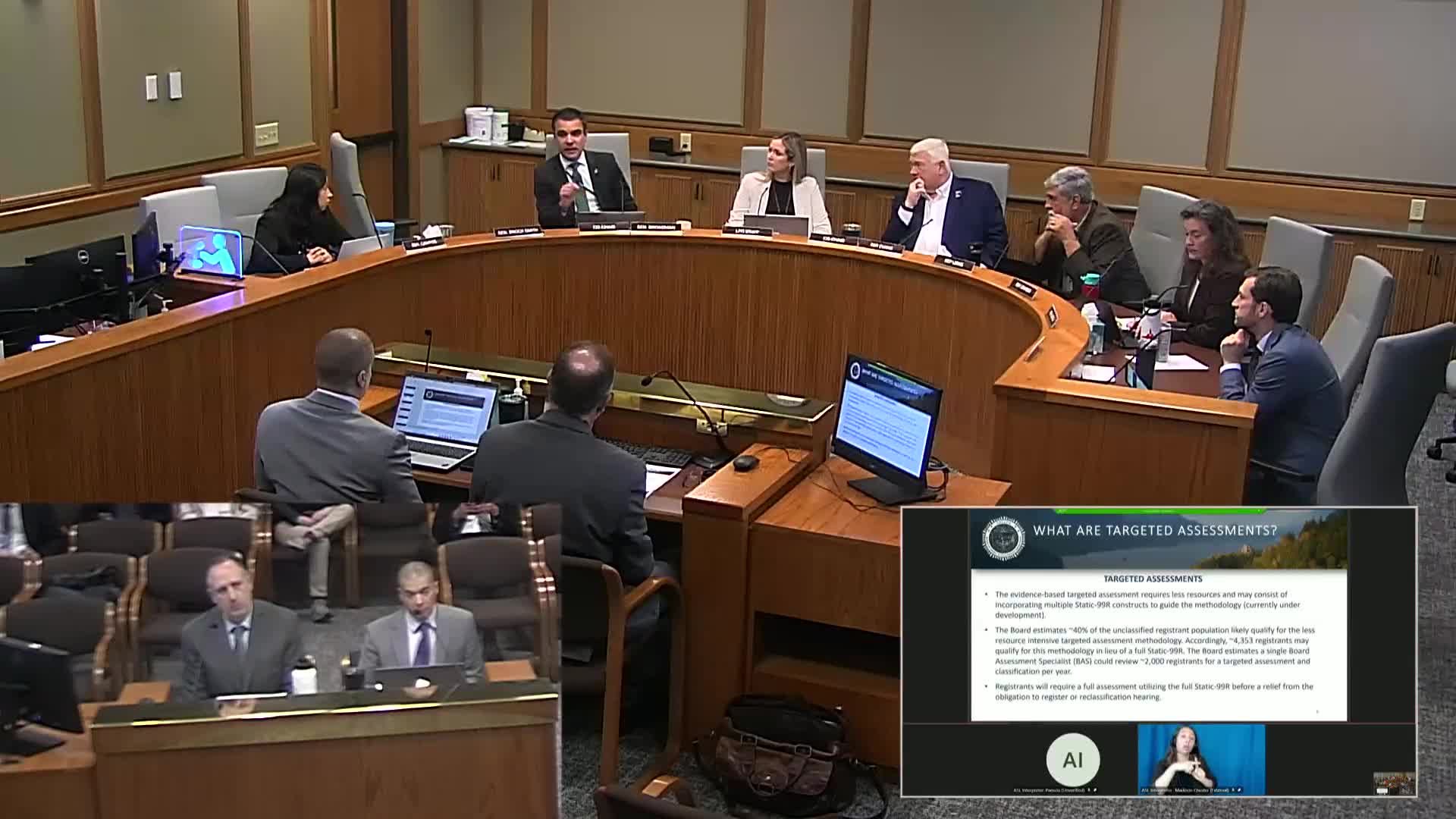Oregon lawmakers discuss new targeted assessments for sex offender classifications
May 07, 2025 | Public Safety, Ways and Means, Joint, Committees, Legislative, Oregon
Thanks to Scribe from Workplace AI , all articles about Oregon are free for you to enjoy throughout 2025!

This article was created by AI using a video recording of the meeting. It summarizes the key points discussed, but for full details and context, please refer to the video of the full meeting. Link to Full Meeting
Co-chairs emphasized that the new method would not lower notification levels but would streamline the process for identifying individuals who qualify as level 1 offenders. This targeted assessment is designed to ensure that individuals classified as level 1 are accurately assessed, preventing any misclassification of higher-risk individuals as lower-risk. "Our number one priority is to make sure that we're not cap leveling someone as a level 1 who's actually a level 3," one co-chair stated, highlighting the importance of precision in these classifications.
Currently, the existing static 99 assessment allows for approximately 250 assessments per year. The proposed changes could increase this efficiency eightfold, allowing for a more effective allocation of resources. If individuals seek relief or reclassification, a comprehensive review process will still be in place to ensure their correct classification.
The meeting also addressed the role of hearings officers, who are crucial in managing objections to classifications. With an increase in classifications, the need for additional hearings officers was underscored, as they handle about 110 hearings annually. Their role includes reviewing objections from individuals classified as level 2 or 3, ensuring that any errors in classification are corrected.
While the exact error rate in classifications was not provided, co-chairs noted that it is "extraordinarily low." However, the committee expressed interest in obtaining specific data on the success rates of individuals challenging their classifications, which could provide further insight into the effectiveness of the assessment process.
As Oregon moves forward with these changes, the anticipated outcomes include a more efficient classification system that maintains public safety while ensuring fair treatment for individuals in the registry. The committee plans to gather more data to inform future discussions and decisions on this critical public safety issue.
Converted from Joint Committee On Ways and Means Subcommittee On Public Safety 05/07/2025 8:00 AM meeting on May 07, 2025
Link to Full Meeting
Comments
View full meeting
This article is based on a recent meeting—watch the full video and explore the complete transcript for deeper insights into the discussion.
View full meeting